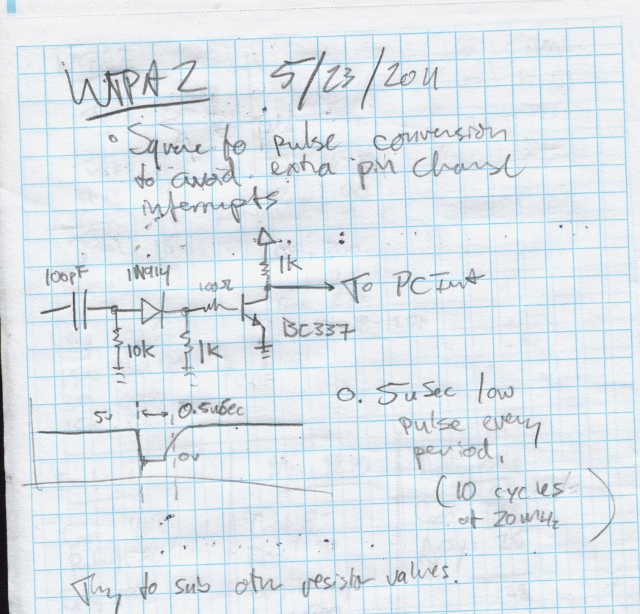WTPA2 Work Resumed!!
All right, so now that Cory’s biz is done and the art world is safe again, I can get back to God’s Work, by which I mean making samples that sound like farts. That’s right, WTPA2!
WTPA2 has been promised now for like a million years. I’m shooting for actually having it ready by the end of June for Bent Festival.
In that spirit, I dug out my old prototype. There’s a lot wrong with it. I found most of the hardware bugs way back when, and I added another input for a separate pitch control to the second sample bank. The idea was to use the spare op-amp to make an RC oscillator and use it to clock the second sample bank and use the main oscillator to clock the first bank. Clock sources could then be switched or interchanged in hard or software.
Problem is, the only uncommitted pins left that can trigger an IRQ are interrupt-on-change pins. That means that I can’t only trigger on a rising or falling edge — the ISR will trigger on BOTH. That means a 10kHz square wave will trigger 20k interrupts a second. I could make the clock half as fast I guess, but that seems like it will confuse people. For the time being I dealt with it by checking the state of the pin in the ISR, but that’s lame too. It means we vector away from mainline code twice as often as we need to. So I came up with this:

It’s a pulse shaper. It takes a clock input, and regardless of duty cycle, spits out a low-going pulse on every rising clock edge. The diode and cap here are responsible for separating out the edges, and the transistor squares them up again (more or less). Hooked up to the function generator (Agilent 33120A, 50ohm out) I can get a nice 0.5uS low going pulse really consistently! I can use this to trigger an interrupt, and the pulse will ALWAYS rise again during the ISR (the fastest ISR in WTPA2 is like 9uS). Then at the end of the ISR I can clear the interrupt flag. Viola, rising edge interrupts with a couple cents worth of hardware! I’ve rolled this and some other hardware changes into the next proto revision and will be ordering it soon.
July 6th, 2011 at 1:39 pm
[…] with a more viable solution than throwing in an extra $5 op amp. The problem with the original pulse shaper circuit was simply that it was designed with a function generator and not a 20 cent opamp in a RC […]